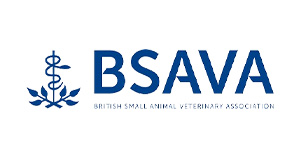Haemonchus Worms
Published on: Apr 12, 2017
We have had several phone calls recently regarding sudden death in sheep. Cases from two of these farms were sent for post mortem.
The first farmer was finding middling size growing lambs dead in the field. Only one of these lambs had shown signs of scouring. They had all been wormed but were towards the end of their cover. They were vaccinated against Clostridial diseases and pneumonia.
On the second farm there had been a loss of 3 mature ewes all in good body condition, again with no diarrhoea. All ewes with multiples had been wormed at lambing. Faecal egg counts (FEC) had revealed only a mild worm burden, therefore the ewes were being monitored for body condition and any signs of scour, whilst the lambs were wormed 6weeks after turn out.
Both post mortem examinations revealed huge burdens of Haemonchus worms in the abomasum and only moderate amounts of typical gut worms. Haemonchus, also known as the Barbers Pole Worm (due to its stripey appearance) causes severe anaemia. The Langford’s post mortem vets have reported a recent surge in Haemonchus due to ideal weather conditions for the parasite this year. The presentation can catch us out as the anaemia which causes death often precedes any typical worm symptoms such as diarrhoea. Animals affected can show signs of lethargy, weakness, fluid gathering under the chin, increased heart rate and respiratory rate as a result of the anaemia.
Prevention is obviously better than cure but in acute cases where animals are presenting with sudden death, we cannot necessarily rely on FEC information alone to predict problems. It is important to closely monitor animals for signs of ill health or anaemia on a regular basis, particularly in the second half of summer. Pasture larvae come from eggs passed by ewes during the periparturient period as well as overwintered larvae on the pasture. It is often when this first cycle has completed and a second generation of larvae infects animals in late summer that we see acute clinical disease.
On some farms it may be possible to avoid problems by not grazing heavily infested pastures, for example moving animals (particularly weaned lambs) onto hay or silage aftermaths from July onwards. Where treatment is needed it is best to leave a portion (say 10%) of animals untreated or to return animals to the infected pasture for a few days before moving them; this helps to prevent anthelmintic resistance developing on your farm. However in more severe acute outbreaks we may need to take more stringent action. If you are concerned that Haemonchus may be a problem on your farm, we are more than happy to help you to formulate a farm specific control plan.











